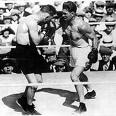Jack Dempsey book
Leave a Comment Jack Dempsey’s guide to championship fighting
Jack Dempsey’s guide to championship fighting
Is a great book for boxers and coaches
The book is written in a colloquial 1950s fashion, and is more entertaining as a result- palooka is a phrase not often used.
The book is a good guide to training for boxers, but also for other athletes and coaches. I especially like the way Dempsey has stated that fighters are made not born, and that he has analysed his sport and written a guide on how to get better at it.
Not for him the lazy coaching analysis of “natural talent”. He offers clear advice on how to get better.
His guide to daily training for the amatuer athlete is spot on, and still relevant 60 years later.

